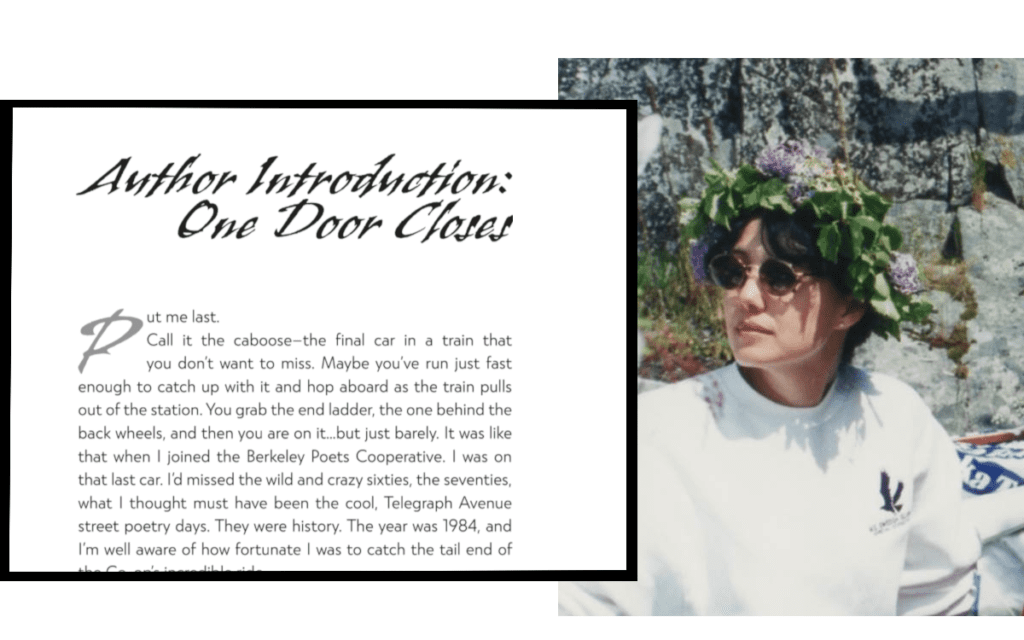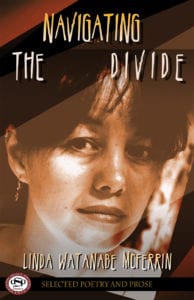Linda Watanabe McFerrin Breaks Down the Art of the Book Introduction
Poet, author, travel-writer, Linda Watanabe McFerrin, speaks with us about the oft overlooked literary introduction, and breaks down the intent of her own author's introduction in "Navigating the Divide".

What is the difference between a foreword, a preface, and an introduction?
I prefer to go by the Chicago Manual of Style which, I believe, is what ASP uses. That’s what I usually use in my own editing, and what we [The Wanderland Writers] use for our “Wandering” series. I think the CMS says that an introduction often forms part of the body of the main book (the pages are often numbered as such) and that a foreword is separate from it. The intro also, as a part of the main text, is often written by the author of the work—the preface as well—preface and intro are frequently synonymous.
In actuality, this line is not always so clear. In fact, a lot of the introductions that I like, especially in books of literary analysis or collected works by a single writer, are called “intros” but are not written by the author. In literary collections, the intro is sometimes the editor’s presentation and framing of the work.
What is at the front of "Navigating the Divide"?
That actually changed. Originally, I wrote an author’s introduction and Joanna Biggar wrote an introduction to the collection, but now Joanna’s intro, which precedes everything written by me, is called the foreword. Traditionally, the foreword is written by someone other than the author, and that is the case with Navigating the Divide. My contribution, which is actually a piece of the narrative, is called the introduction and it frames the work from a personal point of view.
In the “Wandering” series we have always used the intro to explain how to conceptualize the whole book. The foreword is usually written not by us but by an authority on Costa Rica or Cuba or whatever country the anthology addresses in order to give it a more comprehensive framing.
Navigating the Divide's author’s introduction is very personal. It’s an essay I wrote for the Berkeley Poet’s Cooperative. They did an anthology of essays about the co-op from various writers and this piece was included in that book. The first words of the essay are “put me last” and it ties nicely into the flow of that volume, as it takes place just before the end of the Berkeley Poet’s Cooperative’s long life and it is the last essay in the book. So, the [Navigating the Divide’s] foreword is the last essay the BPC’s last anthology: One door closes, another opens.
What is the function of the author’s intro in NTD?
One thing about NTD is that it is very autobiographical. Whether I’m writing poetry, fiction or non-fiction—I embrace subjectivity. With the NTD introduction, I was creating a subjective lens through which to see all of the work within the book. It’s all about my personal perspective, and if there were to be a guide leading one through the whole work it would be my point of view, which is unique to me. So, I thought that giving the readers some background on how I came to write, and also the influences in my work, in the introduction allows more understanding at the outset so that they can to be sort of in-there and with me on the journey.
How does Joanna Biggar's intro help the reader understand NTD?
Joanna’s wonderful introduction is key. It addresses the collection in general, talking more aesthetically about the work from a larger frame [than my introduction which is more personal].
Have you written introductions for any other books?
Along with Joanna, I’ve written the intros for all the “Wandering” series books, and for a couple others. I did a foreword for The Hand of Buddha, which was important since, I was writing at the time about a lot of different cultures due to my travel and my experience in my home neighborhood which is very multicultural. The purpose of the foreword was to assure people that I wasn’t simply appropriating information about a culture that I knew nothing about, but instead that it came from an intense involvement in the lives and experiences of the people about whom I was writing.
If you could write an intro for any author's collected works who would it be?
Oh, gosh … so many. I think Yukio Mishima. I did my orals on Mishima. Yukio Mishima or William Shakespeare, or Lady Murasaki Shikibu because she was the woman who wrote the very first novel ever, The Tale of Genji or Genji Monogatari.
I would like to write intros for books about all the writers I love.
Do you have any advice for someone currently struggling to write an intro?
First of all, I would recommend reading the whole of the work that’s involved. No exceptions.
Secondly, whether you’re writing a foreword or an Introduction, I would recommend you think about what your position is proximal to the work: are you writing from inside the work? outside the work? is it personal? is it on a cultural figure? what is the frame you’re trying to present? is it a large frame?
For example, in our “Wandering” series, we would ask somebody like Tony Wheeler from Lonely Planet to frame Bali, or Jeff Greenwald to frame our “Wandering Cuba” collection, or David Downey for our Paris collection; they are “experts” on those places. Then, Joanna and I would write something about the collection itself and the specific pieces that are in the collection.

“I have loved everything I’ve ever read by Linda Watanabe McFerrin. Her prose and poetry are filled with amazing women, charm, wisdom, and light. She is both soulful and precise, eloquent and full of life.”—Anne Lamott
Linda Watanabe McFerrin’s Navigating the Divide is the third entry in the ASP Legacy Series. It is due for release on OCT 1st, 2019. NTD is a compendium of the best poetry, prose, and non-fiction writing from the stellar career of Linda Watanabe McFerrin.